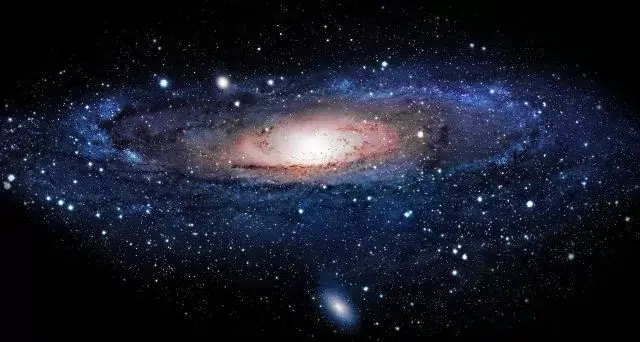Important points about plastics
- The word, plastic, was derived from the word ‘Plastikos’ meaning ‘to mould’ in Greek.
- Fossil fuels have compounds containing hydrogen and carbon (hydrocarbon) which act as building blocks for long polymer molecules. These building blocks are known as monomers, they link together to form long carbon chains called polymers.
- Plastic, polymeric material that has the capability of being molded or shaped, usually by the application of heat and pressure.
- This property of plasticity, often found in combination with other special properties such as low density, low electrical conductivity, transparency, and toughness, allows plastics to be made into a great variety of products.
- These include tough and lightweight beverage bottles made of polyethylene terephthalate (PET), flexible garden hoses made of polyvinyl chloride (PVC), insulating food containers made of foamed polystyrene, and shatterproof windows made of polymethyl methacrylate.
Types of Plastics
Depending on physical properties, plastics are divided into two types: Thermoplastic and thermosetting.
- Thermoplastic: Plastics that can be deformed easily upon heating and can be bent easily. Linear polymers and a combination of linear and cross-linked polymers come under thermoplastics. Example: PVC, nylon, polythene, etc.
- Thermosetting: Plastics that cannot be softened again by heating once they are moulded. Heavily cross-linked polymers come under the category of thermosetting plastics. Example: Bakelite, melamine, etc. Bakelite is used for making electrical switches whereas melamine is used for floor tiles.
There are 7 types of plastic exist in our current modern days:
1. Polyethylene Terephthalate (PET or PETE or Polyester)
- PET is also known as a wrinkle-free fiber.
- PET is mostly used for food and drink packaging purposes due to its strong ability to prevent oxygen from getting in and spoiling the product inside.
- It also helps to keep the carbon dioxide in carbonated drinks from getting out.
- Although PET is most likely to be picked up by recycling programs, this type of plastic contains antimony trioxide—a matter that is considered as a carcinogen—capable of causing cancer in a living tissue.
- The longer a liquid is left in a PET container the greater the potential for the release of the antimony.
- Warm temperatures inside cars, garages, and enclosed storage could also increase the release of the hazardous matter.
2. High-Density Polyethylene (HDPE)
- HDPE has long virtually unbranched polymer chains which makes them really dense and thus, stronger and thicker from PET.
- HDPE is commonly used as the grocery bag, opaque milk, juice container, shampoo bottles, and medicine bottle.
- Not only recyclable, HDPE is relatively more stable than PET.
3. Polyvinyl Chloride (PVC)
- PVC is typically used in toys, blister wrap, cling wrap, detergent bottles, loose-leaf binders, blood bags and medical tubing.
- PVC or vinyl used to be the second most widely used plastic resin in the world (after polyethylene).
- In the term of toxicity, PVC is considered as the most hazardous plastic.
4. Low-Density Polyethylene (LDPE)
- Polyethylenes are the most used family of plastics in the world.
- LDPE is mostly used for bags (grocery, dry cleaning, bread, frozen food bags, newspapers, garbage), plastic wraps; coatings for paper milk cartons and hot & cold beverage cups.
- Although some studies have shown that LDPE could also cause unhealthy hormonal effects in humans, LDPE is considered as a safer plastic option for food and drink use.
- Unfortunately, this type of plastic is quite difficult to be recycled.
5. Polypropylene (PP)
- Stiffer and more resistant to heat, PP is widely used for hot food containers.
- Its strength quality is somewhere between LDPE and HDPE.
- Besides in thermal vests, and car parts, PP is also included in the disposable diaper and sanitary pad liners.
- Same as LDPE, PP is considered a safer plastic option for food and drink use.
- PP isn’t quite recyclable and could also cause asthma and hormone disruption in human.
6. Polystyrene (PS)
- Polystyrene is used for food containers, egg cartons, disposable cups and bowls, packaging, and also bike helmet.
- When exposed with hot and oily food, PS could leach styrene that is considered as brain and nervous system toxicant, it could also affect genes, lungs, liver, and immune system.
- On top of all of those risks, PS has a low recycling rate.
7. Other
- Number 7 is for all plastics other than those identified by number 1-6 and also plastics that may be layered or mixed with other types of plastics, such as bioplastics.
- Polycarbonate (PC) is the most common plastic in this category. PC is typically used for baby bottles, sippy cups, water bottles, water gallon, metal food can liner, ketchup container, and dental sealants.
- Due to its toxicity, several countries have banned the use of PC for baby bottles and infant formula packaging.
- Added with its very low recycle rate quality, PC is to be avoided at all cost.
Recycling of Plastic
- Recycling of plastic is very important. If they are not recycled at the proper time, then they get mixed with other chemicals or materials and hence become more difficult to recycle and become a source of pollution.
- They are non-biodegradable, and they do not get decomposed by the microbial action.
- To avoid this, it is important to use biopolymers or biodegradable polymers.
Properties of Plastic
- Strong and ductile
- Poor conductors of heat and electricity
- Easily moulded into different shape and size
- Resist corrosion and are resistant to many chemicals.
Plastic Pollution
- Plastics are non-biodegradable, synthetic polymers. They are made-up of long chain hydrocarbons with additives and can be moulded into finished products.
- These polymers are broken into monomers such as ethylene, propylene, vinyl, styrene and benzene, etc.
- Finally, the monomers are polymerised chemically into different categories of plastics.
- Petroleum-based plastic is not biodegradable. It usually goes into a landfill where it is buried or it gets into the water and finds its way into the ocean.
- Since plastic does not decompose into a natural substance like soil, it degrades (break down) into tiny particles after many years. It releases toxic chemicals (additives that were used to shape and harden the plastic) in the process of breaking down which make their way into our food and water supply.
- These poisonous chemicals are now found in the human bloodstream. Causing cancer, infertility, birth defects, impaired immunity and many other ailments.
- Though it varies between types, every single category of plastic could leach hazardous materials if put in an extreme situation such as extreme heat.
- 3 types of plastic that are considered as safer options among the others are Polyethylene Terephthalate (PET), High-Density Polyethylene (2-HDPE), and Polypropylene (5-PP).
Also refer :
- Download the pdf of Important MCQs From the History Of Ancient India
- List Of Important Inscriptions In India








